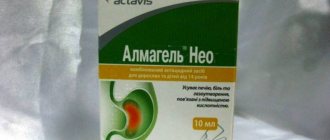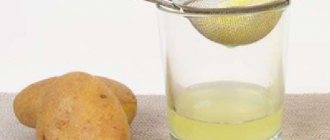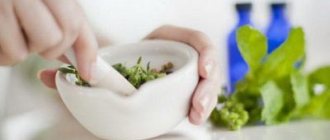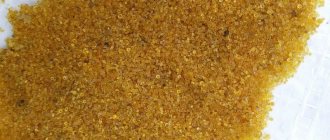Symptoms of gastritis with low acidity
Symptoms are similar to other diseases of the gastrointestinal tract:
But there are also characteristic signs.
- Pronounced loss of appetite.
- Feeling of “fullness” in the stomach even after eating a small amount of food.
- Acute “stabbing” pain in the stomach (especially in its upper segment) on an empty stomach or immediately after eating.
What causes an exacerbation?
- Certain medications (long-term use of hormonal, anti-inflammatory drugs).
- Lack of chewing teeth (food is poorly crushed), inflammation of the oral mucosa - all this disrupts digestion.
- Poor nutrition (abuse of spicy, fatty, fried foods, too hot food, dry snacks on the go, dry food).
- Stress, alcohol, smoking.
Treatment is always the same: medications and diet. It is imperative to undergo treatment so that the disease does not develop into an ulcer or other serious illness.
Signs and symptoms
A decrease in the acidity of digestive juice is quite difficult to determine. This disease does not have pronounced symptoms, so it is better to consult a doctor if the following appears after eating:
- belching with a rotten smell;
- bad breath;
- bowel dysfunction, especially constipation;
- nausea with vomiting;
- when undigested food is visible in the stool;
- sharp cramping pain in the stomach;
- lack of appetite;
- bloating and accumulation of gases in the abdomen.
With such secretion of digestive juice, the following occurs:
These diseases can be avoided by returning the digestive juice to its normal acidity. The reason for the decrease in acidity is:
- malfunction of the fundic gland, in which parietal cells are not produced; the saturation of hydrochloric acid depends on their number;
- improper and irregular nutrition;
- prolonged stress and taking antidepressants;
- some diuretics, bronchodilators and antibiotics cause a decrease in acidity.
It is enough to adjust the diet, restore the disturbed microflora, and the stomach will work as expected again, but before that the doctor must determine how low the acidity is.
Gymnastics for the stomach with low acidity
For the stomach to function normally, diet and medications are not enough. To speed up recovery and reduce the risk of the disease becoming chronic, you need to perform therapeutic exercises.
Perform exercises 10 days after an exacerbation of the disease, one and a half to two hours before or after meals.
If pain occurs, stop exercising.
Treatment of gastritis
Do the following simple exercises.
- Pull your straight leg back and at the same time raise your arms up. Then change the leg. Perform 3-4 times with each leg.
- Bend to the sides and forward - three to four times.
- Turn your torso in one direction or the other, 4 times in each direction.
- Take a deep breath. Hold the breath. Exhale. Repeat 6 times.
- Stretch your legs. Place your hands on your lower back. Bend your lower back 5 times.
- Raise your right leg straight up and lower it. Repeat 4-6 times. Do the same with the left.
Lying on your back. Perform the “bicycle” exercise for one to two minutes.
Hiking and healthy running at a slow pace, swimming, but only one and a half to two hours after eating are good for the stomach.
Symptoms and herbs for gastritis with low acidity
- Feeling of fullness in the stomach
- Heaviness after eating in the epigastric region
- Nausea
- Belching
- A dull aching pain that occurs immediately after eating, aggravated in an upright position, when walking.
However, sometimes this type of gastritis is asymptomatic. Without treatment, it can even develop into stomach cancer.
It is very important to follow a diet: cook mainly boiled, stewed or fried without a rough crust, pureed dishes.
You can eat everything, but you must exclude fresh bread, flour, dairy, peas, beans, fatty meat, canned food, hot sauces.
Phytotherapy
1) Take three parts:
- Dry crushed chamomile flowers
- Plantain leaves
- Calendula flowers
- Polygonum herbs
- Rose hips.
- Potentilla herbs
- St. John's wort
- Coltsfoot leaves.
- Yarrow—5 parts
- Oregano herb - three
- Knotweed - two
- Wormwood - two
- Wormwood roots - two
- Horsetail - one
- Yellow clover - one.
Prepare all the listed fees according to the following scheme: 2-3 tbsp. l. pour 0.5-0.7 liters of boiling water into a thermos overnight and strain in the morning. Drink half a glass 15 minutes before meals and before bed.
Alternate all preparations so that you do not get used to the bitterness. The course is three weeks, a five-day break and proceed to the second collection.
Alternative treatment for gastritis with low acidity
1) During an exacerbation with swelling of the mucous membrane, mix:
- Knotweed - three parts
- Dandelion root - 2
- Rose hips - 2
- Knotweed - 1
- Veres - 1.
1 table. l. collection, pour 0.5 liters of boiling water in a thermos for three hours. Drink a quarter glass every hour for one or two days, then half a glass three times a day half an hour before meals and before bed.
You can additionally take chaga extract (pharmacy befungin). 1 table. l. dilute 1 glass of boiled warm water. Drink a tablespoon three to four times a day 20-30 minutes before meals. To relieve the severity of the process, 5-6 months are enough, but to consolidate the effect, you need to use the fees for another 3-5 months.
What is gastritis
2) For prevention and exacerbations in the fall and spring for two years, it is useful to take bitters in monthly courses.
To do this, mix five parts of Veronica officinalis herb, four parts of thyme herb, three each of barberry leaves, blue cornflower flowers and dandelion root.
Pour a tablespoon of raw material into 1.5 tbsp. boiling water in a thermos for an hour. Drink half a glass twice a day 10-15 minutes before taking the main mixture.
3) Apples for gastritis
Apples will help with gastritis with low acidity. You should use only green ones (Antonovka). In the morning on an empty stomach, peel 200-300 g of apples, grate and eat immediately before the pulp darkens. Then do not eat or drink anything for four hours.
And before each meal, drink 100 ml of milk with 1 tbsp. l. honey Do this for a month. Acidity is normalized.
4) For the healing of stomach ulcers with low acidity.
1 tbsp. l. dry plantain herb pour a liter of boiling water into a thermos. Leave for 2 hours. Drink the strained infusion 1 tbsp. l. three times a day 30 minutes before meals or 2 hours after. The course is a month. After two weeks you can repeat.
Pain in the pit of the stomach, bloating, belching after eating, nausea, bad taste in the mouth - all these are signs of chronic gastritis.
Nutrition for gastritis
5) Rinse 20 chicken gizzards well under hot water. Remove the shell. Place on a baking sheet and dry in the oven at 50 degrees. Then grind the films into powder. Take half a teaspoon before meals.
Doctor's comment: The mucous membrane of the ventricles contains pepsin, an enzyme for the complete digestion of protein foods. It restores digestion. But not recommended for ulcers.
Onion jam for gastritis with low acidity
Add 0.5 kg of peeled chopped onion to 500 g of sugar and mix. Let stand for 10 minutes to release the juice. Cook over low heat until thickened, stirring occasionally. Store in the refrigerator in a glass jar, covered with a plastic lid.
Eat a tablespoon several times a day.
Doctor's opinion: the beneficial properties of onions are practically not lost during heat treatment. But it increases gastric secretion and irritates the mucous membrane, which is contraindicated for stomach ulcers and gastritis with high acidity. But with low acidity, such jam will only be beneficial.
Diet for gastritis with low acidity
For gastritis with low acidity, it should be excluded from the diet.
- Hot, smoked, spicy foods that irritate the gastric mucosa.
- Foods and dishes that take a long time to digest in the stomach. These are any products made from butter dough, pancakes, fried pies, rice, rye bread.
But meat and fish broths, which stimulate acid formation, on the contrary, should be included in the daily diet.
Effective treatment of gastritis with low acidity with folk remedies
Treatment of gastritis with low acidity with folk remedies can be very effective, but only if traditional therapy prescribed by a doctor is also present. The disease can be treated with various herbs, plants from which decoctions and tinctures are prepared, vegetables and juices from them. Before using folk remedies, you should consult your doctor about this.
In most cases, proper nutrition helps to reduce acidity, therefore, along with traditional and non-traditional remedies, it is necessary to adhere to a diet. In order not to further reduce the already low level of gastric acidity, it is necessary to completely abstain from alcoholic beverages.
Causes of low stomach acidity
Low acidity is one of the symptoms of a number of diseases and pathological conditions. Here is their list:
- Chronic gastritis. In the first phase of its development, the disease is accompanied by increased secretory activity of the glands of the gastric mucosa, as a response to its inflammation. Subsequently, atrophy of the mucosa occurs and the number of glands producing hydrochloric acid decreases. And this is gastritis with low acidity. The disease progresses slowly, and low gastric acidity is more common in older people.
- Diseases of the endocrine glands: thyroiditis (pathology of the thyroid gland), diabetes mellitus (pathology of the pancreas), Addison's disease and some others.
- Oncological diseases.
- Anemia. An insufficient amount of hydrochloric acid is associated with malabsorption and deficiency of iron and vitamin B12, therefore, with anemia.
- Alopecia areata.
- Vitiligo.
- Taking antacids
- Parasitic infections.
- Autoimmune gastritis.
- Alcoholism.
In this case, hydrochloric acid in the stomach performs several functions:
- activates the secretory activity of the digestive glands of the stomach;
- creates conditions (acidity of a certain level) for the work of enzymes that break down protein;
- causes denaturation of proteins (this also contributes to their breakdown by enzymes);
- antibacterial function (therefore the stomach is a serious barrier to infection);
- in addition, as an irritant, hydrochloric acid activates the receptors of the mucous membrane of the junction of the stomach and the duodenum, thereby participating in the mechanism of passage of food from the stomach to the small intestine,
- hydrochloric acid performs a regulatory hormonal function (regulates the function of the glands that produce secretin and gastrin);
- stimulates gastric motility (contraction of the stomach walls)
- hydrochloric acid curdles milk (denatures milk proteins).
Application of herbal medicine
Treatment of gastritis with low acidity with folk remedies can be carried out using herbal preparations.
According to many patients, the best and most effective remedy is to collect herbs with dill seeds. The collection stimulates the production of gastric juice and has an anti-inflammatory and enveloping effect.
To prepare the product you need to arm yourself with:
- 1 tbsp. l. plantain leaves;
- 1 tbsp. l. marshmallow flowers and leaves;
- 1 tbsp. l. centaury plants;
- 1 tbsp. l. common hop cone;
- 1 tbsp. l. dill seeds
First of all, crush the dill seeds. Next, the plants are crushed and all ingredients are thoroughly mixed. The resulting mixture must be poured with 1 liter of boiling water and left under the lid for half an hour. You should drink the prepared infusion half an hour before meals, 2 tbsp. l. The entire course of treatment lasts 3 weeks.
Gastritis with low acidity can be cured with the following mixture:
- 10 g peppermint;
- 10 g wormwood;
- 10 g sage leaves;
- 10 g yarrow;
- 10 g chamomile flowers.
All herbs are crushed and mixed thoroughly. Next, you need to take 2 tsp per glass of boiling water. mixture and leave the mixture for half an hour under a tightly closed lid. After time, the infusion must be strained and taken 1/2 cup 3 times a day. Before each use, the infusion must be warm.
The herbal collection with rosemary is not inferior to its predecessor in terms of effectiveness. To prepare the infusion you need to equip yourself with:
- 3 parts rosemary leaves;
- 2 parts peppermint;
- 6 parts knotweed.
All plants are crushed. Next take 3 tbsp. l. mixture and pour 600 ml of boiling water. Leave the composition to infuse for 2 hours. In this case, the mixture should be covered. After 2 hours, filter the composition and take 200 ml 3 times a day. The infusion is drunk warm. The first time it is taken on an empty stomach.
Effects of anise and other herbs on the gastrointestinal tract
The finished infusion is taken three times a day, 1/4 cup, half an hour before meals. Sandy immortelle flowers can be collected throughout the steppe zone. The infusion of these flowers enhances the secretion of gastric juice, activates the activity of the pancreas and has a beneficial effect on the liver and gall bladder. The flowers contain a lot of different substances that actively affect the functioning of all digestive organs.
To prepare the infusion you will need a tablespoon of raw materials and 200 ml of boiling water. The prepared water infusion is taken 1/2 cup 2 times a day half an hour before meals. Three-leaf watch is a natural antiseptic that well restores the functioning of the gastrointestinal tract. The infusion made from this plant is rich in bitterness, which is imparted to it by bitter glycosides and alkaloids. These substances are necessary for the body to fully function the glands responsible for the production of gastric juice. The infusion taken helps relieve colic, reduces the formation of gases and relieves the urge to vomit. It is enough to put one leaf of the plant in a glass of boiling water, so that in fifteen minutes the aqueous preparation will be ready. It is drunk half an hour before meals. If you use raw materials purchased at a pharmacy, you will need two teaspoons of raw materials per glass of boiling water. This will be a more concentrated solution. It is taken in the same way as an infusion of anise seeds.
Plantain preparations are traditionally used in medicine to treat diseases affecting the stomach. The leaves of the great plantain contain polysaccharides, mucilages and glycosides, mineral salts and phytoncides, which give it medicinal properties. An aqueous infusion of this herb relaxes the smooth muscles of the gastrointestinal tract and eliminates pain caused by spasms. To prepare it correctly, you will need 1 tablespoon of chopped dry herbs, which is poured with a glass of boiling water and left for 15 minutes. Since the resulting infusion is oversaturated with active substances, it is taken a tablespoon before meals. It is recommended to change herbs every 10 days so as not to over-saturate the body with substances of plant origin that can cause individual intolerance or an allergic reaction. It is better to buy all of the herbs listed at the pharmacy.
Treatment of the disease with various herbs, vegetable juices
Gastritis with low acidity is perfectly treated with cabbage juice. To prepare the drink, you need to take fresh cabbage and wash it thoroughly. Next, the vegetable is passed through a juicer. The resulting juice must be filtered through gauze folded in 2 layers.
The drink must be prepared fresh each time or at least for 1-2 days. Drink cabbage juice 3 times a day, half a glass, half an hour before meals. The drink needs to be warmed up a little before drinking to keep it warm.
To treat the disease, you can prepare nettle juice. To do this, you need to take fresh leaves of the plant, wash them and squeeze the juice out of them. As in the previous recipe, you can use a juicer or meat grinder to obtain juice. Drinking nettle juice must also be freshly prepared. Take it 3 times a day, 1 tsp. half an hour before meals. The course of treatment with the drug is 1 month. Next, you should take a break for a week and continue therapy.
You can prepare a wonderful medicine from red rowan that will quickly overcome the disease. You need to take half a kilo of red rowan and add sugar (300 g). Mix the composition thoroughly and leave for 5 hours. After the time has passed, boil for 10-15 minutes. The finished product can be taken half an hour before meals, 3 times a day.
Birch buds will help you quickly defeat the disease. They have antibacterial and anti-inflammatory effects, increase the secretion of gastric juice. 10 grams of dry birch buds are poured with 200 ml of boiled water (cold) and put on fire. Boil the mixture for 15 minutes, then remove from heat, cool and filter. A decoction of birch buds is taken 4 times a day before meals, 1 tbsp. l.
Treatment with folk remedies for gastritis with low acidity must be carried out under the close supervision of a specialist.
Treatment
In modern medicine, there are many methods to determine the level of acidity in the stomach. Treatment consists of several stages:
- taking medications;
- diet.
After studying the research results, the doctor should prescribe treatment that will be aimed at eliminating the following problems:
- restoration of the gastric mucosa;
- normalization of digestion;
- treatment with antibacterial agents.
Quite often, in order to increase the acidity of gastric juice, a specialist prescribes a number of drugs:
- Enveloping agents – protect the gastric mucosa, these include Almagel.
- Antibacterial agents – fight the causes of disease.
- Stimulant medications – help improve the production of hydrochloric acid.
- Substitute drugs are prescribed only if the initial treatment has not produced results.
- Restorative agents – help normalize gastric juice.
- Vitamins – help keep the immune system in order.
Important! Treatment for low acidity is prescribed after the doctor has identified the causes of the disease. If the cause is infectious gastritis, treatment consists of eradication of microbes. This means comprehensive treatment of the disease.
In this case, the following are assigned:
- antibiotics – Amoxicillin;
- proton pump inhibitors – Omeprazole;
- bismuthate subcitate – De-Nol.
Medicines that increase acidity cannot be selected independently; you must consult a doctor before use. There are few medications that combat low acidity. However, only a doctor will be able to select the dosage based on the examination results.
The main task of the entire treatment is to select drugs so that the amount of enzymes in the stomach reaches the required level and digestion begins to work stably.
It is better to take Omez at times when the patient is suspected of having an infectious disease. Almagel envelops the walls of the stomach and protects the mucous membrane.
It is better to take De-Nol half an hour before meals; this medicine is prescribed for the treatment of gastritis and other diseases.
De-Nol has protective and anti-inflammatory properties. A positive effect on the source of infection was noticed by both patients and doctors. The drug, dissolving in gastric juice, envelops the walls of the stomach, thereby protecting it from pathogenic bacteria.
When a doctor prescribes De-Nol:
- for digestive problems;
- for stomach pain;
- in the treatment of gastritis.
De-Nol not only has protective and anti-inflammatory effects, but also helps in the regeneration of gastric tissue.
In addition to the medication method, doctors recommend following a diet. It should be started simultaneously with taking medications.
To increase the production of hydrochloric acid, you need to avoid foods (fermentations) that contain protein:
- dairy products;
- yogurt;
- sour cream;
- fruits.
If you are interested in how to increase stomach acidity at home, you must adhere to the established rules:
- 30 minutes before meals, drink a glass of mineral water that does not contain gas;
- When eating food, it must be chewed thoroughly;
- refuse excessively hot dishes;
- eat only food that was prepared not long ago.
Important! Only a doctor can tell you exactly how to treat a disease of the digestive system. You must adhere to a diet and undergo medication therapy.
For stomach diseases, treatment that increases acidity is necessary. When choosing a diet, the doctor must look at the general state of health and the clinical picture of the disease.
Treatment of gastritis with traditional methods
Gastritis is a disease of the stomach of inflammatory nature, accompanied by damage to the superficial cells of the mucous membrane and deeper layers. Treatment of gastritis with folk remedies does not replace medications, but is intended to help eliminate the pathology and prevent the transition to an ulcer.
The most convenient period for using alternative methods of therapy is the elimination of the acute phase of inflammation and the transition of the disease into a protracted relapsing course, when the symptoms become dull, but at times patients feel aching pain in the epigastrium, nausea, belching, heartburn, and after eating there remains a feeling of heaviness in the upper abdomen.
Intestinal dysfunction (diarrhea and constipation) sometimes worries patients more than pain. In order to effectively use folk remedies for gastritis and not resist the achieved positive results from medications, healers must take into account the acidity of gastric juice and the form of gastritis.
The main directions of application of people's councils
Traditional medicine pays very close attention to dietary recommendations. It makes no sense to take purchased or prepared herbal remedies without following a diet that prevents the gastric mucosa from irritation and stress.
The most effective remedies and medicines are not able to cure the disease if the patient does not stop smoking and continues to consume alcohol, fatty, fried and spicy foods. Treatment of hypersecretory gastritis will require ways to bind acid and protect the mucosa.
And with a decrease in acidity, an atrophic process, on the contrary, it is necessary to stimulate the glandular cells remaining in the stomach and support the restoration of the lost epithelium. Among herbal remedies in the folk treatment of gastritis, dry herbs, leaves, roots, flowers, and fruits are used. The part of the plant in which the beneficial properties accumulate as much as possible is selected.
There are not always sufficient conditions for self-collection and drying at home. Therefore, it is better to buy the ingredients at the pharmacy. This way you can be sure of proper cultivation and the absence of impurities from a polluted external environment.
Gastritis is often a secondary pathology and develops against the background of chronic cholecystitis, pancreatitis, and enterocolitis. An example would be reflux gastritis, associated with the backflow of duodenal contents. To normalize the functioning of the sphincters and coordinate the motility of the stomach and intestines, drugs that relieve muscle spasms and choleretic agents are used.
In cases of erosive gastritis, which threatens to develop into a gastric ulcer, it is necessary to ensure the scarring process, to prevent bleeding and transformation into a tumor. Therefore, it is better to refuse independent choice of therapy and use only methods of official medicine.
What to include in your diet?
We will not describe a complete diet for patients with gastritis. Let us dwell only on the proposals of traditional medicine for especially healing products and describe what properties they have. The recommendations say that the catarrhal (superficial) form of gastritis can only be dealt with with the right diet and herbal medicine.
Green apples are recommended to be taken peeled, peeled, finely chopped or mashed for breakfast. It is enough to take 2-3 medium-sized apples. According to the prescription, the patient should not eat for 3 hours before and after consumption in order to prevent fermentation processes.
You can repeat another “apple feeding” during the day, but not at night. The course of treatment is 3 months: in the first month - eat daily, in the second - every other day, in the third - once a week. Quail eggs are one of the popular home remedies for treating gastritis. It is recommended to drink them raw half an hour before meals. It is acceptable to eat 2-3 eggs per day.
Traditional healers urge not to be afraid of salmonellosis; eggs do not require boiling. It is impossible for quails to develop infection because birds have a body temperature of 42 degrees. This condition is not suitable for Salmonella to survive. You can mix raw eggs into mashed potatoes, soups, and cereals.
Oatmeal jelly is a wonderful remedy that relieves pain in the stomach, coats the inflamed surface of ulcerative gastritis and activates tissue regeneration. Oats have a general strengthening effect, very rarely cause allergies, and therefore are useful for children and pregnant women.
Making real oatmeal jelly is not easy:
- grind 2 cups of flakes as finely as possible, add warm water (about 2 liters), stir and leave for 12 hours;
- strain the resulting mass;
- Cook the remaining liquid over low heat for half an hour until thickened, stirring occasionally, add salt and sugar, as in porridge.
How to treat gastritis with vegetable oil?
The use of oils in traditional methods of treating gastritis is not disputed by official medicine. The consistency and composition undoubtedly have beneficial properties and help with exacerbations and chronic diseases of the gastrointestinal tract. Please pay attention to the purchase and expiration date of the medications.
For therapeutic purposes, you need to buy fresh, first cold-pressed oil. A shelf life of no more than 6 months is suitable (preferably the first 3 months). Let us remember that some oils are still used in the culinary industry and for technical purposes. Therefore, you need to monitor sales attempts.
The process of obtaining oils is quite complicated for home use. It is better to purchase drugs from a pharmacy chain or specialized stores. It is enough to add any oils to food (not hot), you can drink one tablespoon on an empty stomach.
Olive oil differs from sunflower oil in its high content of unsaturated fatty acids and vitamins K, A, E, D. Helps with gastritis and for healing stomach ulcers. It has been proven to contain special substances that prevent the development of cancer.
Sea buckthorn oil is suitable for the treatment of all types of gastritis, especially those with increased acidity. Has good wound healing properties. In folk medicine, recipes are offered for mixed use with honey, aloe juice, and propolis tincture.
Flaxseed oil is milder than olive and sea buckthorn oil; not everyone will like the taste and smell. However, taking a teaspoon orally before meals allows you to relieve pain, inflammation, and heal damage to the surface of the stomach.
It has a disinfecting effect on Helicobacter in the antrum and pylorus, and other pathogenic microorganisms in acute bacterial gastritis. Milk thistle oil is better known as an invaluable “helper” for liver dysfunction.
In cases of secondary gastric damage, it has a healing effect, is indicated after radiation and chemotherapy, stabilizes and limits tumor growth. Contains many biologically active nutrients, electrolytes and microelements, unsaturated fatty acids, carotenoids, in addition to fat-soluble B vitamins.
How to treat low stomach acidity?
For low gastric acidity, the main treatment in adults is aimed at eliminating 3 main problems that slow down the production of HCl and lead to complications:
- restoring the functioning of the glands, stimulating them to active functioning;
- elimination of any diseases of the gastrointestinal tract;
- destruction of pathogenic bacterial flora.
Therapy is complex. Doctors put dietary nutrition first, followed immediately by taking medications, and to support the achieved result, you can turn to traditional medicine recipes.
In case of reduced stomach acidity, a complex of medications is used that affect the functioning of the gastrointestinal tract, envelop the digestive organs from the inside, protecting them, and also facilitate the process of breaking down food:
- antibacterial agents – kill intestinal flora, which helps protect the body from bacterial infections;
- probiotics – prescribed simultaneously with antibiotics, they populate the gastrointestinal tract with beneficial bacteria, leaving no room for pathogens;
- antispasmodics – relieve intestinal spasms, stabilize its motility;
- enveloping agents - line the stomach from the inside, protecting the delicate mucous membrane from negative influences;
- vitamins – strengthen the body, eliminate symptoms of anemia;
- Enzymatic preparations - help the stomach break down food.
Medicines must be taken strictly as prescribed by the attending physician, since the dosage and medications must be selected individually, otherwise they can only cause harm to the body.
Traditional medicine also gives good results in the fight against low acidity. Treatment is carried out using juice remedies, such as infusions of chokeberry, lingonberry, rose hips, viburnum, aloe, calamus, fennel, and anise.
Effectively increase the level of acidity in the stomach:
- honey water (100 grams of warm water with a teaspoon of honey diluted in it), which should be taken half an hour before meals;
- alcohol tincture of unripe walnut fruits, prepared from 15 green nuts infused for 2 weeks in half a liter of vodka;
- natural gooseberries.
A reduced level of stomach acidity is a symptom of a disease with metabolic disorders in the body, and its treatment will be effective after the elimination of the underlying disease, followed by correction of digestive problems using replacement therapy drugs, diet and herbal teas.
Treatment of low acidity levels is a fairly lengthy process that requires patience, endurance and strict adherence to all recommendations and prescriptions of the attending physician.
For patients suffering from low acidity of gastric juice, it is important to follow a therapeutic diet during the course of therapy. When the disease worsens, food restrictions are strict; when the patient’s well-being improves, a gradual expansion of the diet is allowed.
The basis of dietary nutrition is protein foods and foods enriched with vitamins, microelements and minerals.
Dietary recommendations for low acidity:
After the patient’s well-being improves and acute symptoms of the disease are relieved, the doctor recommends including foods that can normalize the acid balance:
- Yogurts and other fermented milk drinks with a high percentage of fat content, but without additives.
- Natural juices from carrots, apples, oranges.
- Fresh fruits: quince, grapes, citrus fruits, pomegranate.
- Vegetables: cucumbers, tomatoes, cabbage.
- Berries: lingonberries, cranberries, currants, cherries.
Coffee is allowed to be drunk in limited quantities and not hot. To enrich with vitamins, it is recommended to consume honey and fruit jellies or marmalade, which are based on natural juices.
Types and symptoms of gastritis
There are several types of gastritis, differing in symptoms.
An exacerbation is characterized by:
- loss of appetite;
- constant unpleasant taste in the mouth;
- heaviness and pain in the stomach after eating;
- heavy salivation;
- flatulence;
- nausea;
- vomit;
- weight loss;
- weakness and deterioration in performance.
The symptoms of erosive gastritis are as follows:
- pain in the stomach and behind the sternum, which can be mistaken for heart pain;
- severe vomiting of blood;
- unpleasant odor and taste in the mouth;
- intermittent breathing;
- hoarseness;
- bloating, pain on palpation.
Gastritis with high acidity
manifests itself mainly by problems with stool. After eating, heartburn appears, worsening at night, heaviness in the stomach and belching with the smell of hydrogen sulfide. Gastritis with low acidity is characterized by loss of appetite.
Atrophic gastritis manifests itself:
- losing weight;
- belching hydrogen sulfide;
- dull pain and heaviness in the stomach;
- heartburn;
- loss of appetite.
Symptoms
Low acidity in the stomach and its symptoms are similar to other diseases of the digestive system. Main symptoms:
- after eating a person begins to experience stomach pain;
- belching and bad breath;
- the onset of heartburn;
- flatulence, hiccups;
- stomach upset.
If a patient experiences such signs, it is better to consult a doctor. Only he can correctly diagnose and prescribe treatment. If the acidity has decreased and the patient is diagnosed with diseases of the digestive system, high-quality treatment is necessary. If the disease is prolonged, serious consequences may develop.
Interesting! Top 10 foods that increase gastric acidity
People with low acidity most often experience signs of anemia:
- problems with hair begin, they become dull and dry;
- the skin becomes dry;
- nails become brittle and peel;
- There may be a rash or acne on the skin.
If a person does not monitor his health and is not treated, this can lead to the following consequences:
- Hemoglobin in the blood becomes lower, which leads to a general loss of strength.
- Skin hypoxia (lack of oxygen in the skin) may occur.
As a result of these problems, a person may experience health problems, as well as nervous disorders.
Symptoms of low acidity do not appear immediately. But, nevertheless, if they begin to appear, you should immediately pay attention to this and consult a doctor.
Treatment of gastritis at home
Diet for gastritis
For effective treatment of gastritis, both with medication and at home, adherence to a therapeutic diet is mandatory.
First of all, it is necessary to exclude
fried, spicy, fatty foods from the menu.
Also prohibited
are canned food, fresh white bread, boiled eggs, fried eggs, and spices. As for fruits, you should not go overboard with sour varieties and citrus fruits.
You should include foods containing fiber, magnesium, zinc and vitamins in your diet. Dairy and vegetable soups, dried bread, porridge, lean meat and fish are shown. Potatoes, beets, carrots, and cauliflower are useful vegetables. Suitable drinks include green tea, rosehip infusion, and jelly.
All food must be cooked. Since cold and hot foods irritate the mucous membranes, you should only eat warm foods.
Meals should be fractional - at least 5-6 times a day. Large portions of food that overload the stomach, dry food, and fast food are prohibited.
Juice therapy
Juice therapy is an affordable and effective way to treat gastritis at home
, especially for garden owners. Many juices contain substances that promote healing and regeneration of stomach tissue.
Apple, grape and citrus juices promote increased production of gastric secretions. Carrot and cucumber juices will also help cure gastritis at home. Due to its high bromelain content, pineapple is recommended for the treatment of gastritis with low acidity.
For stomach bleeding
Shepherd's purse juice or geranium juice will help. Taking aloe juice daily will help normalize the condition of chronic gastritis at home.
Potato juice is the most popular for treating gastritis in the initial stages at home.
To prepare it, select young tubers that do not contain large quantities of starch. You can use a juicer for preparation. It can be diluted with water before use. For two weeks you should drink 100 ml of juice every morning before meals. Potato juice may have a laxative effect.
Normalize acidity
The juice of young white cabbage will help reduce pain and prevent the development of erosion processes at home. Clean, undamaged leaves are passed through a juicer. Drink 100 ml of the drink before breakfast for a couple of weeks.
Treatment with vegetable oils at home
Vegetable oils are effectively used to treat all forms of gastritis at home. This treatment method is contraindicated in patients with cholecystitis.
- Sea buckthorn oil promotes faster healing of the mucous membrane. It contains a lot of vitamin E, which promotes rapid regeneration of the mucous membrane. 5 ml 2 times a day of sea buckthorn oil will help with any form of gastritis. The morning dose of oil should be taken on an empty stomach before meals, and the second dose can be taken with dinner. The course of treatment should last a month, after which a break of 4 weeks is needed. Then you can repeat the monthly course of treatment.
- Cold-pressed flaxseed oil will help normalize digestive processes. Treatment at home should continue for at least 12 weeks. For greater effectiveness, you need to drink 1 tsp. before breakfast and after the last meal. Flaxseed oil is washed down with warm water to improve its absorption.
- Olive oil should also be taken for at least 3 months. In this case, digestion will improve, and the cells of the housing and communal services will be saturated with necessary microelements. Drink one teaspoon of olive oil before breakfast or add it to a salad.
Methods for normalizing acidity at home
Collecting herbs will help increase low acidity at home
: St. John's wort, chicory, yarrow, smokeweed. All herbs in equal proportions are brewed with a glass of boiling water. The collection is infused for another half hour and filtered. Add 3 tbsp to the drink. l. tinctures of golden mustache. You need to drink the infusion in 3 doses.
A collection of plantain, chamomile, St. John's wort, mint, calamus, and calendula will also be effective for acute gastritis. All components must be mixed in equal proportions, one spoon of the mixture should be brewed with half a liter of boiling water and left for a quarter of an hour. You need to drink the infusion 20 minutes before meals.
Horseradish grated with honey helps well with gastritis. You can eat this salad 2 times a day.
Recipe based on stinging nettle
Grind chamomile, linden and elderberry flowers, fennel fruits, mint and nettle leaves. There should be slightly less mint and elderberry than other ingredients. Pour boiling water over two tablespoons of the resulting mixture. After 2 hours, strain. Take 100 grams four times a day.
There are many more recipes. Many of them are based on calamus. Decoctions prepared from it have an analgesic and tonic effect. And most importantly, they help improve stomach contents. But it is contraindicated in case of increased acidity, as well as in acute forms of ulcers.
Treating high acidity levels at home
To treat this form of gastritis at home, a decoction of wormwood is considered a useful remedy. A teaspoon of wormwood should be poured into half a liter of water, brought to a boil and allowed to brew for a quarter of an hour. You need to drink the infusion 2 tsp. half an hour before meals.
An infusion of young red currant leaves is considered an effective remedy. 50 g of fresh leaves are poured with half a liter of white wine. The tincture should stand for 2 weeks in a warm, dark place. The tincture is taken 30 g half an hour before meals.











